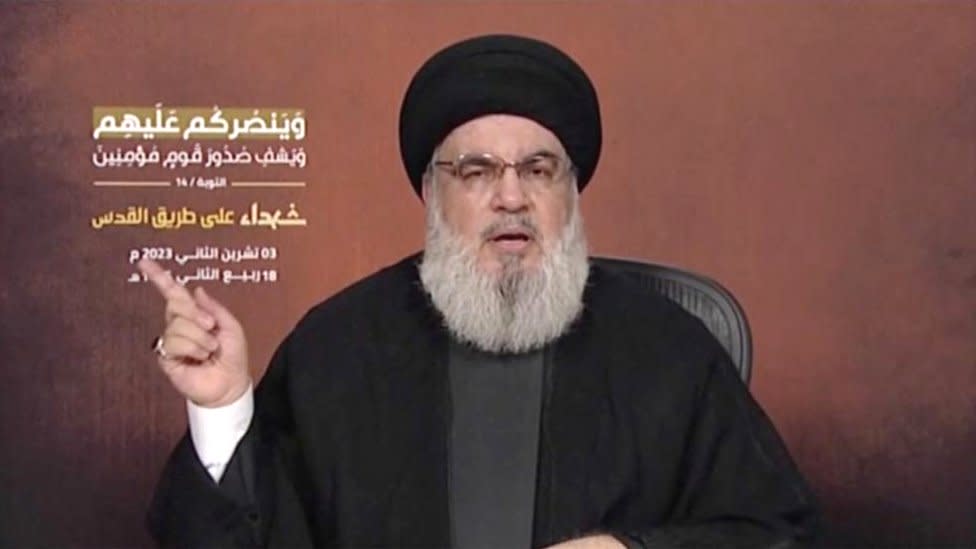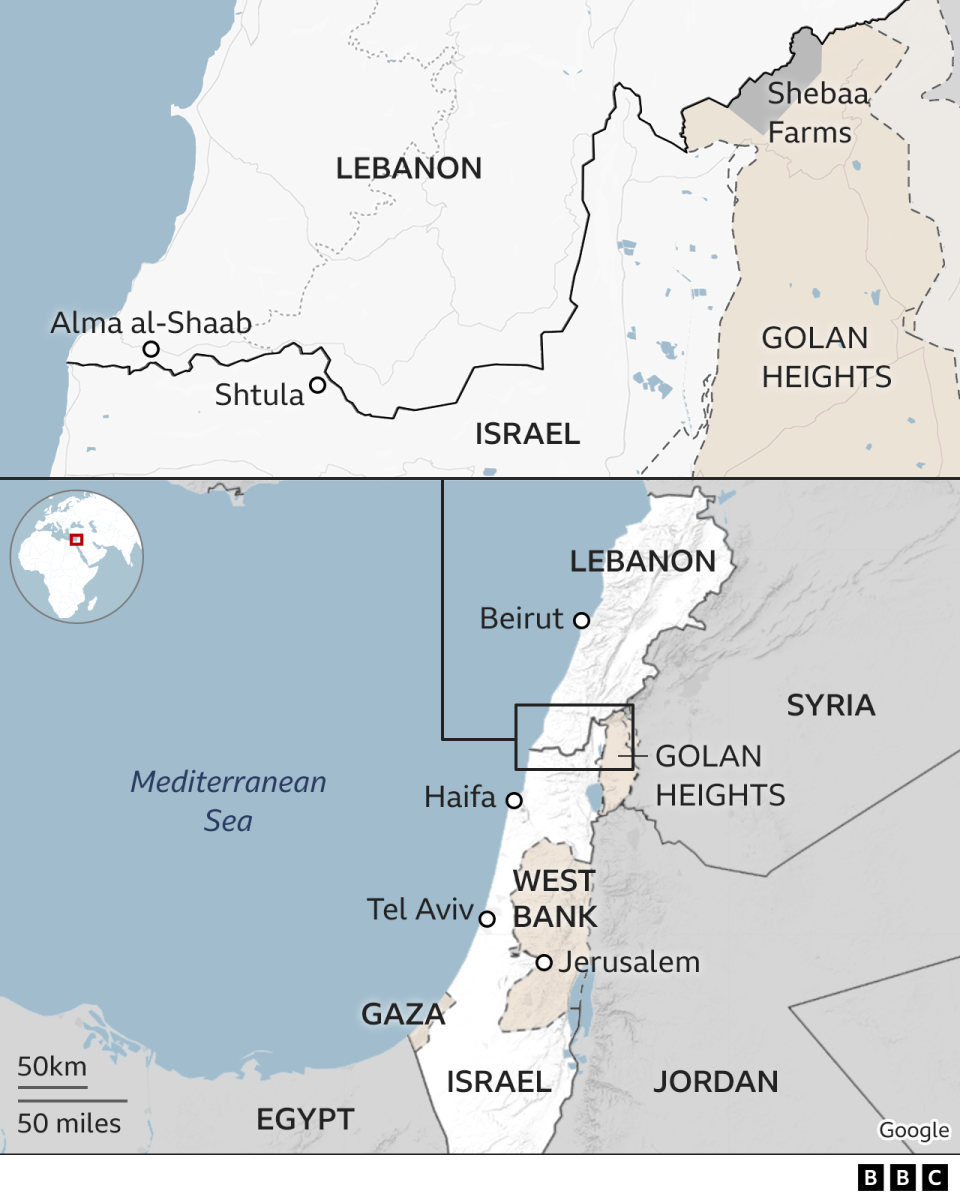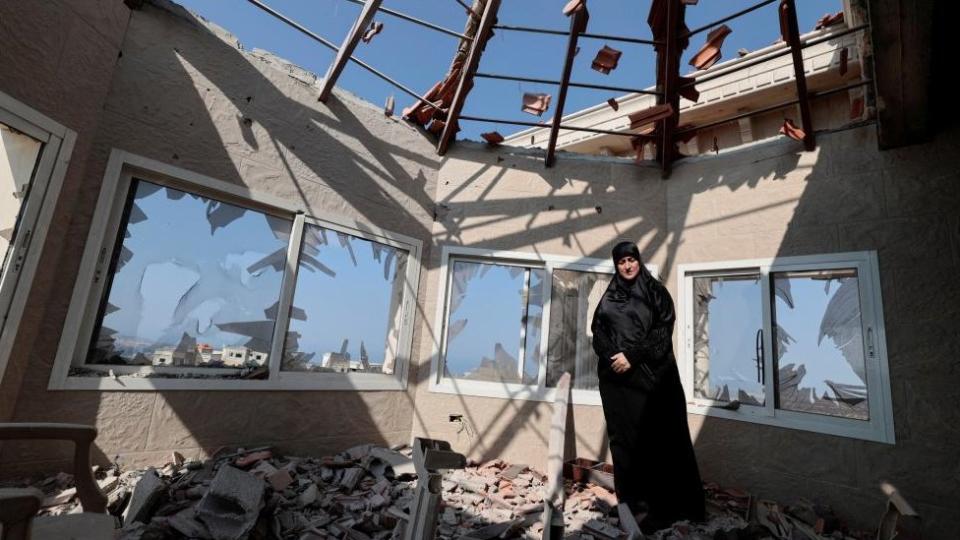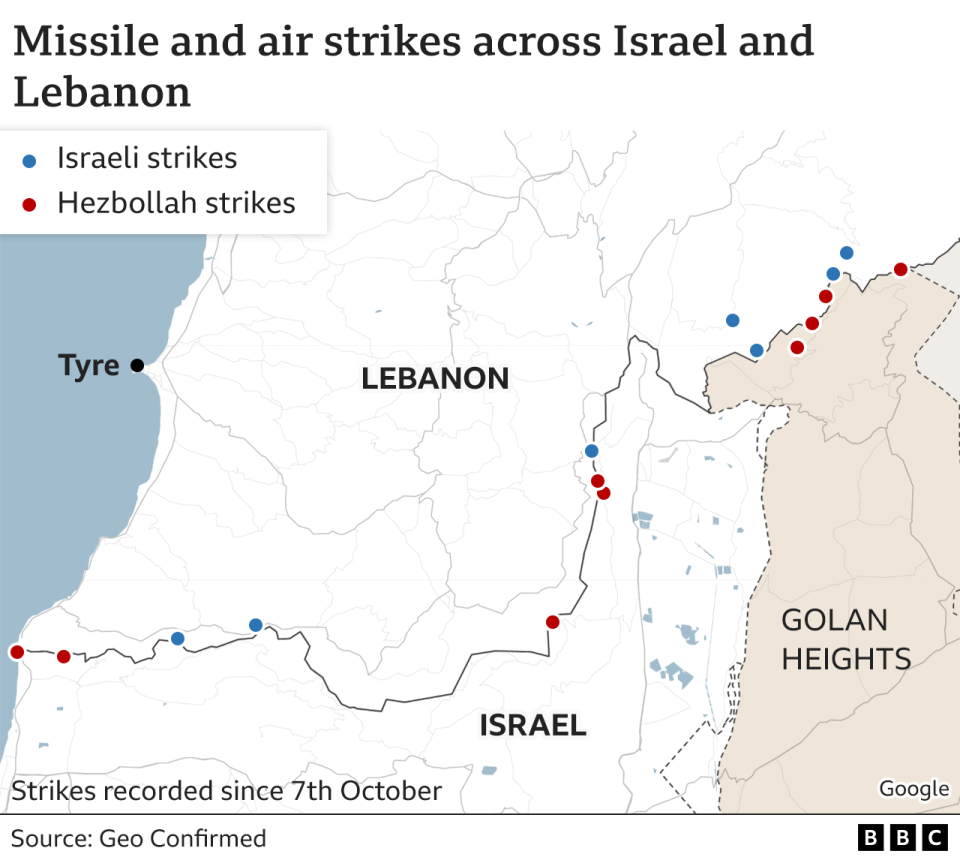What is Hezbollah in Lebanon and will it go to war with Israel?

- Oops!Something went wrong.Please try again later.
A rocket attack blamed by Israel on Hezbollah which killed 12 children and young adults on the Israeli-occupied Golan Heights has sharply heightened fears of an all-out war between the two sides.
It was the deadliest incident in and around Israel's northern border in nine months of near daily exchanges of fire between Israel and Hezbollah.
What is Hezbollah?
Hezbollah is a Shia Muslim organisation which is politically influential and in control of the most powerful armed force in Lebanon.
It was established in the early 1980s by the region's most dominant Shia power, Iran, to oppose Israel. At the time, Israel's forces had occupied southern Lebanon, during the country's civil war.
Hezbollah has participated in national elections since 1992 and has become a major political presence.
Its armed wing has carried out deadly attacks on Israeli and US forces in Lebanon. When Israel withdrew from Lebanon in 2000, Hezbollah took credit for pushing them out.

Since then, Hezbollah has maintained thousands of fighters and a huge missile arsenal in southern Lebanon. It continues to oppose Israel's presence in disputed border areas.
It is designated a terrorist organisation by Western states, Israel, Gulf Arab countries and the Arab League.
In 2006, a full-blown war broke out between Hezbollah and Israel, triggered when Hezbollah carried out a deadly cross-border raid.
Israeli troops invaded southern Lebanon to try to eliminate the threat from Hezbollah. However, it survived and has since increased its number of fighters and obtained new and better weapons.
Who is Hezbollah's leader, Hassan Nasrallah?
Sheikh Hassan Nasrallah is a Shia cleric who has led Hezbollah since 1992.
He played a key role in turning it into a political, as a well as a military, force.
He has close links with Iran and its Supreme Leader, Ayatollah Ali Khamenei.
These date from 1981, when Iran's first Supreme Leader, Ayatollah Ruhollah Khomeini, appointed him his personal representative in Lebanon.
Nasrallah has not appeared in public for years, purportedly for fear of being assassinated by Israel.
However, he remains revered by Hezbollah, and delivers televised speeches every week.
More on Israel-Gaza war
Hostages: Children must be off limits, says father of abducted kids
From Gaza: Stories of those killed in Gaza
Explained: What is happening in Israel and Gaza, and what is Hamas?
History behind the story: The Israel-Palestinian conflict
How powerful are Hezbollah's forces?
Hezbollah is one of the most heavily-armed, non-state military forces in the world. It is funded and equipped by Iran.
Sheikh Hassan Nasrallah has claimed that it has 100,000 fighters, although independent estimates vary between 20,000 and 50,000.
Many are well trained and battle hardened, and fought in the Syrian civil war.

It has an estimated 120,000-200,000 rockets and missiles, according to the Center for Strategic and International Studies think tank.
Most of its arsenal is made up of small, unguided surface-to-surface artillery rockets.
But it also thought to have anti-aircraft and anti-ship missiles, as well as guided missiles capable of striking deep inside Israel.
This is much more sophisticated than what Hamas, in the Gaza Strip, has at its disposal.
Could Hezbollah go to war with Israel?
Previously sporadic fighting escalated on 8 October - a day after the unprecedented Hamas attack on Israel - when Hezbollah fired at Israeli positions, in solidarity with the Palestinians.
Since then, it has launched rockets at northern Israel and Israeli positions on the Golan Heights, fired anti-tank missiles at armoured vehicles, and attacked military targets with explosive drones.
The Israel Defense Forces (IDF) have retaliated, using air strikes, and tank and artillery fire against Hezbollah positions in Lebanon.

The UN says the attacks have forced more than 90,000 people in Lebanon from their homes, with around 100 civilians and 366 Hezbollah fighters killed in Israeli strikes.
In Israel, officials say 60,000 civilians have had to abandon their homes and 33 people have been killed, including 10 civilians, because of attacks by Hezbollah.
Despite the fighting, observers say that up till now both sides have aimed to contain hostilities without crossing the line into full-scale war. But fears are that a particularly deadly incident could cause the situation to spiral out of control.

